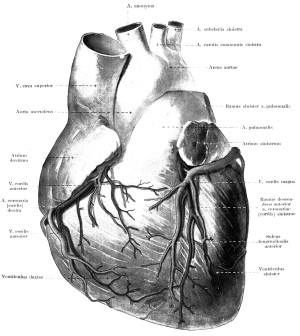- Skip Storing This Everyday Product in the Fridge Door
- Green Tea + B3 Pairing May Boost Brain Health
- Navigating Your Midlife Crisis: Embracing New Possibilities
- City Raccoons Showing Signs of Domestication
- Mapping the Exposome: Science Broadens Focus to Environmental Disease Triggers
- One Week Less on Social Media Linked to Better Mental Health
- Your Brain Changes in Stages as You Age, Study Finds
- Some Suicide Victims Show No Typical Warning Signs, Study Finds
- ByHeart Formula Faces Lawsuits After Babies Sickened With Botulism
- Switch to Vegan Diet Could Cut Your Greenhouse Gas Emissions in Half
After Heart Attack, New Threat: Heart Failure

Risk of heart failure appears high within a few years of a first heart attack, a new study finds.
“Heart failure is a major medical problem with a high chance of hospitalization and death,” said study author Dr. Johannes Gho, a cardiology resident at the University Medical Center Utrecht in the Netherlands.
Heart failure means the heart can’t pump blood efficiently enough to meet the body’s demands.
Improved heart attack treatment has led to higher survival rates, leaving more patients susceptible to later heart failure, Gho said in a European Society of Cardiology news release.
For the study, researchers analyzed data from nearly 25,000 people in the United Kingdom who suffered a first heart attack. Nearly 25 percent of these patients developed heart failure within four years, the investigators found.
Certain risk factors increased the risk of heart failure after a first heart attack, Gho and his colleagues said. For example, every 10-year rise in age was associated with a 45 percent higher risk, and the poorest patients had a 27 percent increased risk.
Atrial fibrillation — a condition characterized by an abnormal heartbeat — and diabetes also significantly increased the risk of heart failure, by 63 percent and 44 percent, respectively.
Other health conditions associated with a higher risk of heart failure after a first heart attack included: peripheral arterial disease, chronic obstructive pulmonary disease (COPD), high blood pressure, and a type of heart attack known as STEMI (ST elevation myocardial infarction).
“Patients with ischemic heart disease are at the highest risk [for heart failure]. This includes those who have had a myocardial infarction, also called heart attack,” Gho said.
“Research studying incidence of heart failure following [heart attack] is limited and mainly stems from the thrombolytic era, when drugs were used to dissolve blood clots,” he explained. Today, stenting is the preferred treatment for heart attack, where a small mesh tube is used to open the blocked artery, he said.
On the one hand, stenting has improved treatment for heart attack, so the risk of heart failure would be expected to decrease, Gho said. “On the other hand, because treatment has improved, more patients are alive after a heart attack to subsequently get heart failure,” he added.
“Finding which heart attack patients are most likely to get heart failure would help us target preventive therapies,” he said.
The findings were scheduled for presentation Tuesday at a meeting of the European Society of Cardiology’s Heart Failure Association in Florence, Italy. Research presented at meetings is considered preliminary until published in a peer-reviewed medical journal.
More information
The American Academy of Family Physicians has more about heart failure.
Source: HealthDay
Copyright © 2025 HealthDay. All rights reserved.










